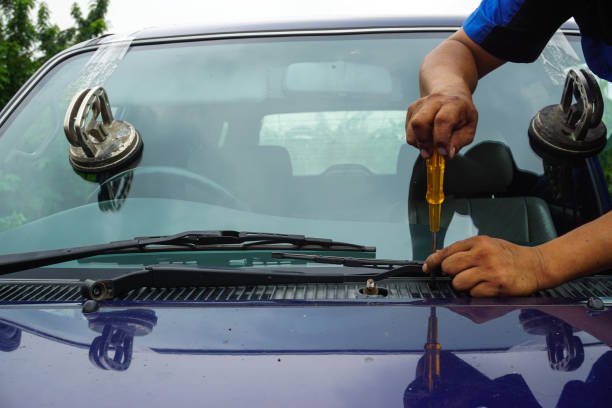How to Care for a Newly Replaced Windshield?
Getting your windshield replaced is a significant step in maintaining the safety and integrity of your vehicle. However, the care you provide to your newly replaced windshield in the hours and days following installation is just as critical as the replacement process itself. Proper care ensures the longevity of your new windshield and maintains your vehicle's safety.
In this article, we delve into the essential steps and precautions necessary to take care of your newly replaced windshield, aimed at those seeking in-depth and useful information presented in simple English, including insights on windshield repair or replacement.

Understanding the Curing Process
The first and perhaps most crucial aspect to be aware of after a windshield replacement is the curing process of the adhesive used to hold the glass in place. This adhesive, often urethane-based, requires time to set and achieve its full strength. The time needed can vary depending on several factors, including the type of adhesive used, humidity, and temperature. Typically, it takes about one to several hours for the adhesive to become tack-free and 24 to 72 hours to fully cure. During this period, it's essential to follow specific care instructions to avoid compromising the seal and the positioning of the windshield.
Avoid Driving Immediately
After installation, it’s advisable to wait at least one hour before driving the vehicle. This waiting period allows the adhesive to reach a level of strength that is safe for driving. Driving too soon could put unnecessary pressure on the windshield and the adhesive, risking displacement or leakage.
Leave a Window Cracked Open
For the first 24 hours after installation, it’s beneficial to leave at least one window cracked open slightly. This precaution prevents the build-up of air pressure inside the cabin when you close the doors, which can put stress on the still-curing adhesive.

Retain the Retention Tape
The technicians might apply retention tape to help hold the windshield moldings in place while the adhesive cures. Although it might not be aesthetically pleasing, it's important to leave this tape on for at least the first day. Removing it too soon can allow for environmental debris to interfere with the drying adhesive and can dislodge the moldings.
Avoid High-Pressure Car Washes
For the first few days following your windshield replacement, avoid taking your vehicle through high-pressure car washes. The force of the water can weaken the adhesive bond before it has fully cured. Instead, if you must wash your vehicle, opt for a gentle hand wash, being careful not to soak the newly installed windshield's edges.
Be Mindful of the Glass
In the initial days after installation, the windshield is more vulnerable to pressure and impact. Therefore, it's wise to avoid slamming doors and driving on rough, bumpy roads as much as possible. Such actions can exert unnecessary pressure on the windshield and disturb the adhesive.
Environmental Impact
There's also an environmental aspect to consider. Windshields are made of laminated glass, which is not as easily recyclable as other types of glass. Prompt repairs can often save the windshield, reducing the need for replacement and, consequently, the environmental impact. When a windshield must be replaced, the old one often ends up in a landfill, contributing to environmental degradation.
Long-term Care Tips
Beyond the initial curing period, there are several practices you can adopt to extend the life of your new windshield and ensure it remains in top condition. For more detailed guidance on maintaining your windshield's integrity and making the right choice between timely repairs and replacements, refer to our comprehensive guide on repairing vs. replacing car glass.
Regular Cleaning
Regularly cleaning your windshield is not just about maintaining visibility; it's also about preventing damage. Use a high-quality glass cleaner and a microfiber cloth to avoid scratching the glass. This practice helps in removing substances that could potentially etch or damage the windshield over time.
Avoid Abrasive Cleaners
When cleaning your windshield, steer clear of abrasive cleaners and tools. These can scratch the glass and weaken its integrity. Always opt for automotive glass cleaners and soft cloths designed for glass cleaning.
Inspect for Chips and Cracks
Regularly inspect your windshield for any chips or cracks, no matter how minor they may seem. Early detection can allow for simpler repairs before any damage worsens, potentially saving you from another replacement. Remember, immediate repair needs can prevent minor issues from escalating into major safety hazards.
Use Sunshades
Prolonged exposure to the sun can weaken the windshield over time, especially around the edges where the adhesive is. Using sunshades when parked in direct sunlight can help protect the integrity of the glass and the adhesive.
Maintain a Safe Distance
One of the best ways to prevent damage to your windshield is by maintaining a safe following distance when driving. This distance reduces the risk of flying debris, such as rocks and gravel, striking your windshield and causing damage.
Taking care of a newly replaced windshield is about understanding and respecting the curing process of the adhesive and adopting practices that protect the integrity of the windshield over time. By following the immediate post-installation instructions and incorporating long-term care tips into your routine, you can ensure the safety, longevity, and clarity of your windshield. Remember, your windshield is more than just a piece of glass; it's a critical component of your vehicle's safety structure, playing a vital role in protecting you and your passengers.
